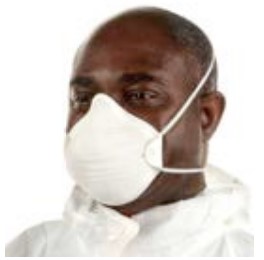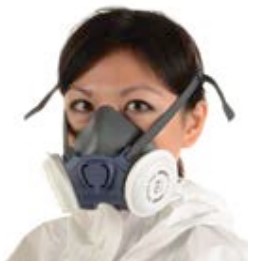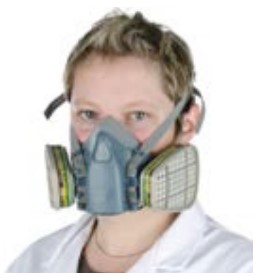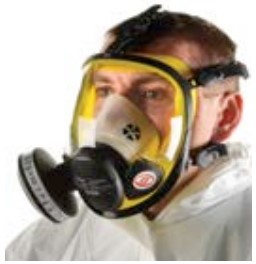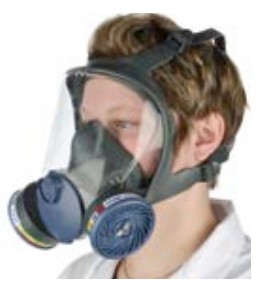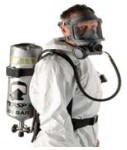Respiratory Protective Equipment
Many tasks involve hazards which require respiratory protection, such as: cutting, handling volatile substances or working in confined spaces where oxygen levels could be low. Respiratory Protective Equipment (RPE) is designed to protect operatives from such hazards. RPE should only be worn after you have taken all other reasonably practicable measures to prevent or control exposure. There are two types of RPE: Respirators (Filtering Devices), which use filters to remove contaminants from the air, can be powered (user breaths air through filter) or powered (a motor passes air through filter); and Breathing apparatus, which use a supply of air from a cylinder or compressor. Respirators can be fitted with either a particle filter or a gas/vapour filter. Particle filters protect against fine sprays, mists and solid materials such as dusts/fibres/smokes and fumes; however, do not protect against gas/vapours. Likewise, gas/vapour filters do not protect against particles. Neither of these types of filters protect against oxygen deficient environments. The below tables show a selection of respirators and breathing apparatus’.
HSE guidance states that when selecting RPE you must ensure that it is Adequate and Suitable for the task at hand. To be adequate the mask must be the right one for the hazard present and reduce its exposure level to the point that is required to protect the wearers health. To be suitable the mask should be the right mask for the wearer, task and environment. The mask should allow the operative to work freely and not add any additional risks.
Each RPE is categorised by an Assigned Protection Factor (APF). This is a rating which tells us how much protection the given RPE can provide. There are only several APFs used: 4, 10, 20, 40, 200 or 2000. For example, an RPE with and APF of 10 will reduce the exposure by at least a factor of 10. The required APF should be in the safety data sheet or COSHH essentials, if this is not the case you can calculate the required APF using the working exposure limit (WEL) (found in EH40 Workplace Exposure Limits) and the quantity of the substance in the air (quantity of substance in the air measured taking exposure measurements in the workplace).
If you are unable to take exposure measurements or if the substance does not have a WEL your RPE supplier may be able to advise you.
Face fit testing… Whenever RPE is being used it is essential that it fits the wearer properly, creating a tight seal, as it cannot offer protection if it leaks. One of the major causes of leaks is poor fitting RPE. Users should be face fit tested upon selection of RPE and then again after there is a significant change that may cause the equipment to be of ill fit, such as changes in weight or any scarring that has occurred to the face. It should be noted that those using RPE must be clean shaven, as a tight seal will be compromised by facial hair. It is also a good idea to repeat testing during regular time increments. Operatives should only wear the exact make, model, type and size of facepiece that they were face fit tested for. Furthermore, if more than one type of RPE is worn then each individual RPE should be face fit tested. It is essential that the person completing the face fit testing is competent to do so. There are two types of face fit testing:
Action to be Taken:
Safe Behaviour Reminder:
PPE is the last line of defence. When selecting PPE always ensure that first all other controls have been applied. (All information correct as of 26th July 2019) |
|||||||||||||||||||||||||||||||||||||||

